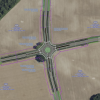Baby turtles captivate Cape Region
What is it about tiny creatures that sparks instant appeal?
Is there any way to explain why literally a dozen people dedicated hundreds of hours to rescuing a clutch of green turtle eggs that experts say would never have hatched without human help?
Was the mother lost? What brought her to Cape Henlopen State Park back in August, when she became the first green turtle known to have laid eggs in Delaware?
Whatever it was, Suzanne Thurman, a local animal rehabilitation expert, said the eggs had “zero chance of survival where she laid them.”
But that is where human fascination with helpless creatures seems to kick in. The eggs were moved, not once but twice. As air temperatures cooled, volunteers moved them to incubators – and then took turns monitoring them and adjusting the temperature to mimic night and day. Months later, in December, eight baby turtles crawled out of their eggs.
Getting the baby turtles to hatch did not end this rescue; the tiny turtles were next taken to North Carolina, where they learned to swim while waiting for a boat ride out to the Gulf Stream.
Some will say the hours devoted to this project is a ridiculous waste of time for a few baby turtles that could well have perished moments after their release.
Yet it’s not only volunteers who spent their time; their story was read more than 5,400 times on the Cape Gazette website, which doesn’t even count those who read the paper – and that count begins only in December when the baby turtles finally hatched.
There has to be a reason that babies – even less-than-cuddly amphibians – spark our attention and compel our interest.
Brain scientists may one day have an answer, but until then we can speculate that amid pollution, wars, climate change, and natural disasters, babies, including amphibian babies, hold the promise of the future, and their rescue represents a human impulse to make the world a better place.
Congratulations to all the volunteers on a remarkable effort that captivated readers across the Cape Region.













































